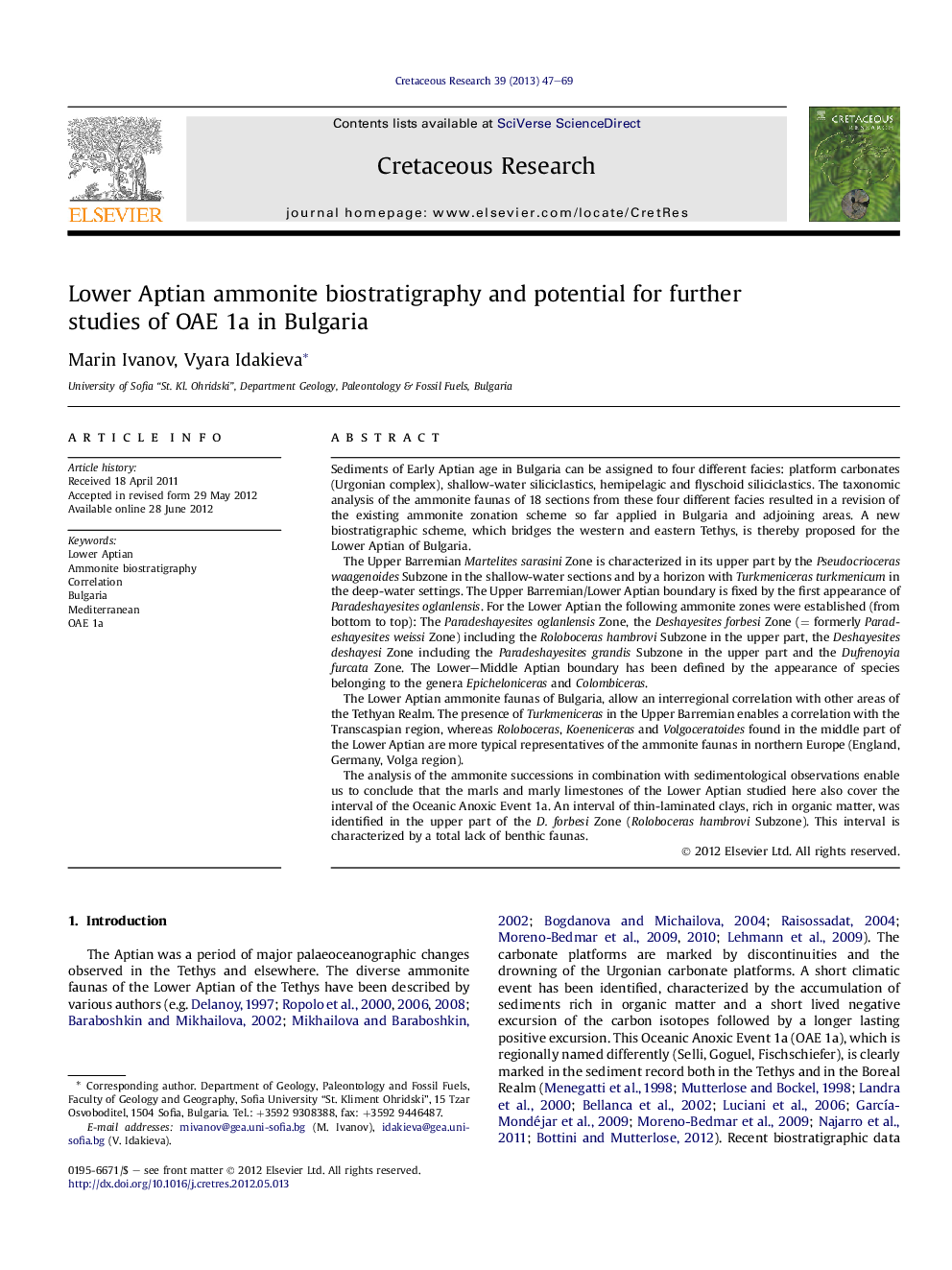| Article ID | Journal | Published Year | Pages | File Type |
|---|---|---|---|---|
| 4747214 | Cretaceous Research | 2013 | 23 Pages |
Sediments of Early Aptian age in Bulgaria can be assigned to four different facies: platform carbonates (Urgonian complex), shallow-water siliciclastics, hemipelagic and flyschoid siliciclastics. The taxonomic analysis of the ammonite faunas of 18 sections from these four different facies resulted in a revision of the existing ammonite zonation scheme so far applied in Bulgaria and adjoining areas. A new biostratigraphic scheme, which bridges the western and eastern Tethys, is thereby proposed for the Lower Aptian of Bulgaria.The Upper Barremian Martelites sarasini Zone is characterized in its upper part by the Pseudocrioceras waagenoides Subzone in the shallow-water sections and by a horizon with Turkmeniceras turkmenicum in the deep-water settings. The Upper Barremian/Lower Aptian boundary is fixed by the first appearance of Paradeshayesites oglanlensis. For the Lower Aptian the following ammonite zones were established (from bottom to top): The Paradeshayesites oglanlensis Zone, the Deshayesites forbesi Zone (= formerly Paradeshayesites weissi Zone) including the Roloboceras hambrovi Subzone in the upper part, the Deshayesites deshayesi Zone including the Paradeshayesites grandis Subzone in the upper part and the Dufrenoyia furcata Zone. The Lower–Middle Aptian boundary has been defined by the appearance of species belonging to the genera Epicheloniceras and Colombiceras.The Lower Aptian ammonite faunas of Bulgaria, allow an interregional correlation with other areas of the Tethyan Realm. The presence of Turkmeniceras in the Upper Barremian enables a correlation with the Transcaspian region, whereas Roloboceras, Koeneniceras and Volgoceratoides found in the middle part of the Lower Aptian are more typical representatives of the ammonite faunas in northern Europe (England, Germany, Volga region).The analysis of the ammonite successions in combination with sedimentological observations enable us to conclude that the marls and marly limestones of the Lower Aptian studied here also cover the interval of the Oceanic Anoxic Event 1a. An interval of thin-laminated clays, rich in organic matter, was identified in the upper part of the D. forbesi Zone (Roloboceras hambrovi Subzone). This interval is characterized by a total lack of benthic faunas.
Graphical abstractFigure optionsDownload full-size imageDownload as PowerPoint slideHighlights► The Lower Aptian ammonite zonation in Bulgaria is revised. ► It is recognized the P. oglanlensis Zone at the base of the substage. ► The D. furcata Zone is indicated at the top of the substage. ► An interval rich in an organic matter was identified in the D. forbesi Zone. ► We assume the presence of the anoxic event OAE 1a in the R. hambrovi Subzone.
